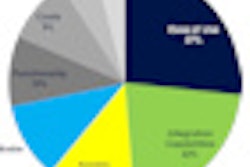Despite the many benefits of importing outside images to PACS, many institutions choose not to, citing concerns such as the possibility of overwhelmed staff and potential legal exposure from storing imaging studies performed at another institution. And there are also some technical and training hurdles, as well as uncertainty over the potential effects on an institution's imaging volume, said presenter Michael Lu, MD.
Seeking to provide the model and motivation for other institutions to consider importing these studies into their PACS, the UCSF team tracked the number of imported studies at their institution between 2007 and 2009. During the period, both the number and percentage of imported studies doubled.
"Demand for this service is increasing and consumes significant professional resources," Lu said. "Additional work to investigate the clinical benefits of importing outside imaging is needed, as well as the investment of professional time versus the resulting increased appropriate referral volume."
In his talk, Lu will address the question of reimbursement for imported studies that are reinterpreted. Of the imported studies in the study period, 8.8% received a formal reinterpretation following a request by the patient's physician.
Reimbursement for formal reinterpretation of imported studies remains an open issue, and one that the UCSF team is actively assessing.
"In order to ensure that reimbursement continues, it is critical to prove that importing outside imaging to PACS improves patient care," Lu said. "This is the focus of our current research."



















